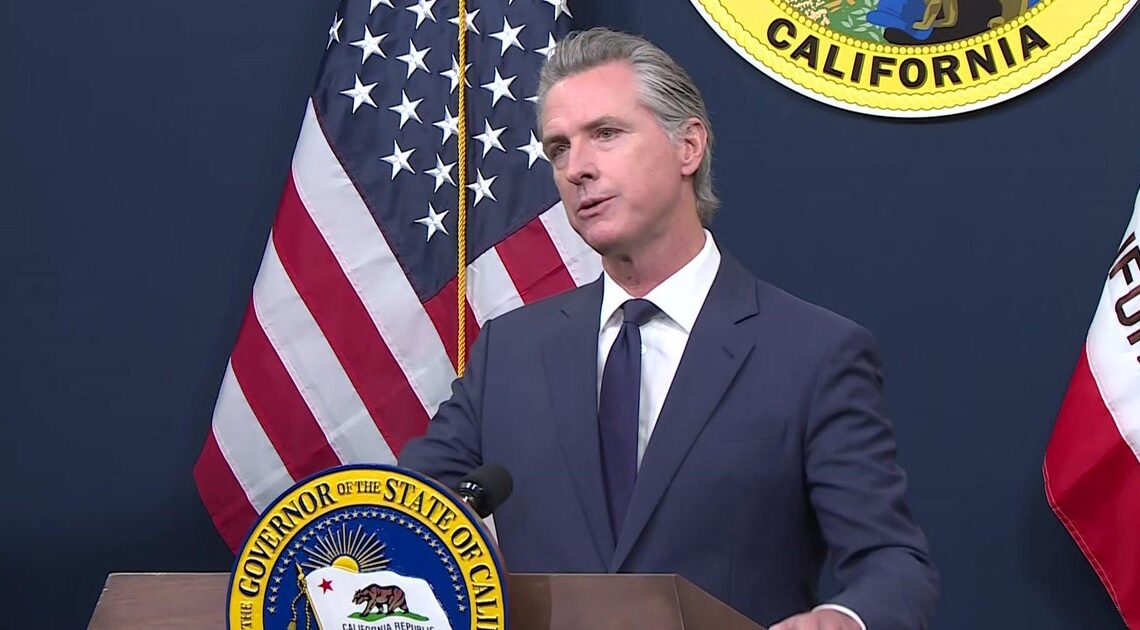
California Gov. Gavin Newsom proposes pausing immigrant health care coverage expansion
14. May 2025
California Gov. Gavin Newsom has proposed a pause to the enrollment of more low-income immigrants without legal status for state-funded health care benefits in 2026 as the state faces economic uncertainty.
Newsom outlined his nearly $332 billion state spending plan on Wednesday, revealing that California is facing a $12 billion budget deficit.
“California is under assault,” Newsom said. “We have a president that’s been reckless in terms of assaulting those growth engines.”
The Democratic governor noted that the freeze does not mean California is backing away from its support for immigrants.
“No state has done more than the state of California, no state will continue to do more than the state of California by a long shot. And that’s a point of pride,” Newsom said.
The decision, the details for which were revealed before Wednesday’s budget revision presentation, is driven by a higher-than-expected price tag on the program and economic uncertainty from federal tariff policies, Newsom said. It also comes as Newsom faces his final years in the governor’s office, with speculation continuing to mount about his future political prospects.
California’s push to offer free health care benefits to all low-income adults, regardless of their immigration status, was announced in late 2023. Newsom touted the planned expansion as “a transformative step towards strengthening the health care system for all Californians.”
However, the cost has exceeded the state’s initial $6.4 billion estimate by more than $2 billion.
Still, as late as March of this year, Newsom suggested to reporters he was not considering rolling back health benefits for low-income people living in the country illegally — even with California grappling with a $6.2 billion Medicaid shortfall. He also repeatedly defended the expansion, saying it saves the state money in the long run. The program is state-funded and does not use federal dollars.
Under Newsom’s plan, low-income adults without legal status will no longer be eligible to apply for Medi-Cal, the state’s Medicaid program, starting in 2026. Those who are already enrolled won’t be kicked off their plans because of the enrollment freeze, and the changes won’t impact children. Newsom’s office didn’t say how long the freeze would last.
Starting in 2027, adults with “unsatisfactory immigration status” on Medi-Cal, including those without legal status and those who have legal status but aren’t eligible for federally funded Medicaid, will also have to pay a $100 monthly premium. The governor’s office said that is in line with the average cost paid by those who are on subsidized heath plans through California’s own marketplace. There’s no premium for most people currently on Medi-Cal.
“We believe that people should have some skin in the game as it relates to contributions,” Newsom said.
In total, Newsom’s office estimated the changes will save the state $5.4 billion by 2028-2029.
The Medi-Cal expansion, combined with other factors such as rising pharmacy costs and larger enrollment by older people, has forced California to borrow and authorize new funding to plug the multibillion-dollar hole earlier this year. California provides free health care to more than a third of its 39 million people.
The proposals come ahead of Newsom’s scheduled presentation on the updated budget. Recovery from the Los Angeles wildfires, changing federal tariff policies, and the expensive health care expansion are putting a strain on California’s massive state budget. Lawmakers are expecting a multibillion-dollar shortfall this year, and more deficits are projected for several years ahead.
Newsom blamed President Donald Trump’s tariff policies for the shortfalls, estimating that the polices have cost the state $16 billion in tax revenues. California is also bracing for major budget hits if Republicans in Congress follow through with a plan to slash billions of dollars in Medicaid and penalize states for providing health care to immigrants without legal status.
Newsom now opens budget negotiations with lawmakers and it’s unclear how Democrats who control the Legislature will react to his plan to freeze new Medi-Cal enrollment for some immigrants. A final budget proposal must be signed by June. California’s budget is by far the largest among states.
“This is going to be a very challenging budget,” Assemblymember Jesse Gabriel, who chairs the budget committee, said before Newsom’s proposals were announced. “We’re going to have to make some tough decisions.”
The budget proposals presented this week will build on some of the impacts of federal policies, but many unknowns remain.
The governor already said he’s planning to scale back on baseline spending this year. Analysts and economists also warn that California will face bigger deficits in the tens of billions of dollars in the coming years due to economic sluggishness and stock market volatility brought on by the tariff war.
The budget Newsom first proposed in January included little new spending. But it allows the state to fully implement the country’s first universal transitional kindergarten program and increase the state’s film and TV tax credit to $750 million annually to bring back Hollywood jobs that have gone to New York and Georgia. He recently called on Trump to pass a $7.5 billion film tax credit at the federal level.
Last year, Newsom and the Legislature agreed to dip into the state’s rainy day fund, slash spending — including a nearly 10% cut for nearly all state departments — and temporarily raise taxes on some businesses to close an estimated $46.8 billion budget deficit.